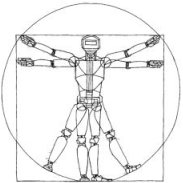Robotics: Science and Systems XIII
Job Selection in a Network of Autonomous UAVs for Delivery of Goods
Pasquale Grippa, Doris Behrens, Christian Bettstetter, Friederike WallAbstract:
This article analyzes two classes of job selection policies that control how a network of autonomous aerial vehicles delivers goods from depots to customers. Customer requests (jobs) occur according to a spatio-temporal stochastic process not known by the system. If job selection uses a policy in which the first job (FJ) is served first, the system may collapse to instability by removing just one vehicle. Policies that serve the nearest job (NJ) first show such threshold behavior only in some settings and can be implemented in a distributed manner. The timing of job selection has significant impact on delivery time and stability for NJ while it has no impact for FJ. Based on these findings we introduce a methodological approach for decision- making support to set up and operate such a system, taking into account the trade-off between monetary cost and service quality. In particular, we compute a lower bound for the infrastructure expenditure required to achieve a certain expected delivery time. The approach includes three time horizons: long-term decisions on the number of depots to deploy in the service area, mid- term decisions on the number of vehicles to use, and short-term decisions on the policy to operate the vehicles.
Bibtex:
@INPROCEEDINGS{Grippa-RSS-17,
AUTHOR = {Pasquale Grippa AND Doris Behrens AND Christian Bettstetter AND Friederike Wall},
TITLE = {Job Selection in a Network of Autonomous UAVs for Delivery of Goods},
BOOKTITLE = {Proceedings of Robotics: Science and Systems},
YEAR = {2017},
ADDRESS = {Cambridge, Massachusetts},
MONTH = {July},
DOI = {10.15607/RSS.2017.XIII.018}
}
